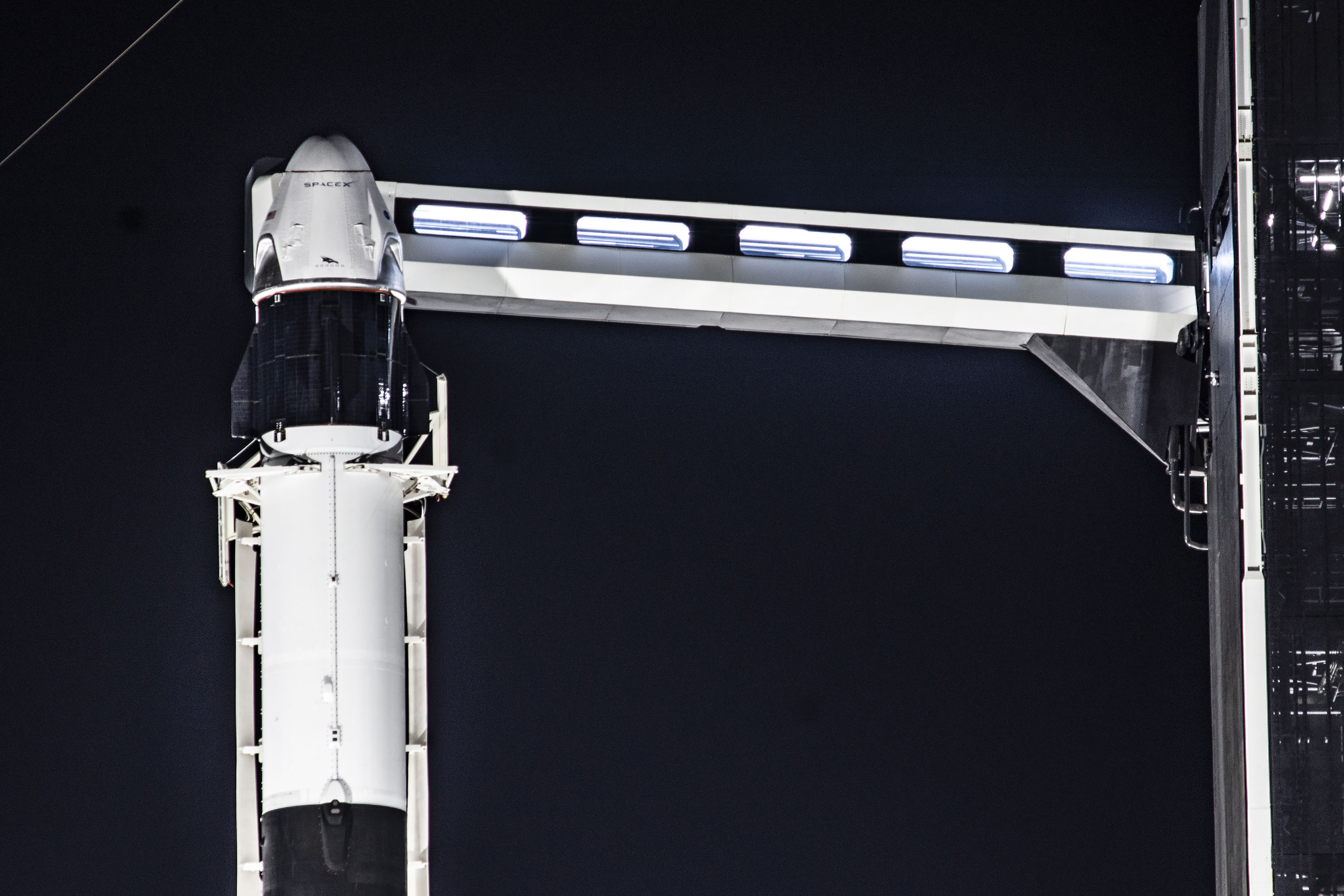How to watch SpaceX's Crew Dragon abort test live online this Sunday

Editor's note: SpaceX has delayed the launch of its Crew Dragon in-flight abort test flight to Sunday, Jan. 19, at 10:30 a.m. EST (1530 GMT). Read our full story.
SpaceX will launch its Crew Dragon spacecraft on a critical abort test Sunday morning (Jan. 19), and you can watch it live online.
The private spaceflight company will use an expendable Falcon 9 rocket to launch the uncrewed spacecraft from Pad 39A at NASA's Kennedy Space Center in Florida at 8 a.m. EST (1300 GMT). If the test flight, known as an in-flight abort, is successful, it will prove that the Crew Dragon has what it takes to keep onboard astronauts safe in the event of an emergency during launch.
You can watch the launch live here on Space.com, courtesy of SpaceX, beginning at about 7:40 a.m. EST (1240 GMT). You can also watch the launch directly from SpaceX here, or from NASA here. NASA's webcast will begin at 7:45 a.m. EST (1245 GMT).
Video: How SpaceX's in-flight abort Crew Dragon launch will work
Related: SpaceX's Crew Dragon faces critical test for future astronaut flights Saturday
This is SpaceX's second launch of the year and the second in just two weeks. The mission will also mark the third time SpaceX has flown a Falcon 9 first-stage booster for the fourth time; this booster previously hoisted the first satellite for Bangladesh, an Indonesian communications satellite, and more than 60 satellites as part of a rideshare mission.
"Critical test launch before flying astronauts is green for Jan. 18," SpaceX CEO Elon Musk tweeted Jan. 11, following a successful test-firing of the Falcon 9.
Breaking space news, the latest updates on rocket launches, skywatching events and more!
This test is the last major milestone SpaceX must complete before it can launch astronauts to the International Space Station. The company successfully launched an uncrewed Crew Dragon to the space station in March 2019, as part of a mission called Demo-1. That spacecraft was later destroyed during ground testing of the abort system.
SpaceX made upgrades to the spacecraft to prevent such an anomaly from happening again, and then performed subsequent tests that showed the abort system was ready to be tested in flight.
The Crew Dragon capsule is equipped with special abort engines that will pull the spacecraft away from its rocket if there's an anomaly during flight. In October 2018, a similar abort system on a Russian Soyuz rocket carried NASA astronaut Nick Hague and cosmonaut Alexey Ovchinin to safety when their booster failed during flight.
Related: Emergency launch abort systems of SpaceX and Boeing explained
Shortly after liftoff on Saturday, onboard software will intentionally trigger the spacecraft's launch-abort system midflight. That system, which comprises eight SuperDraco abort engines built into the spacecraft's hull, will pull the Crew Dragon free of its launcher before performing a parachute-aided ocean landing. A recovery vessel will be standing by to scoop up the Crew Dragon and return it to land.
SpaceX is one of two commercial companies (Boeing is the other) that NASA contracted to build private space taxis to fly astronauts to and from the space station. Boeing's astronaut-toting spacecraft, called Starliner, recently completed its own orbital flight test. However, that spacecraft suffered a mission clock failure that prevented it from reaching the space station.
Weather conditions are predicted to be between 50% and 40% favorable for the launch Sunday morning during the planned 4-hour window, according to the U.S. Space Force's 45th Weather Squadron, which performs weather assessments for space launches. "The primary weather concern is flight through precipitation," launch weather officer Mike McAleenan said during a prelaunch news conference at NASA's Kennedy Space Center on Friday (Jan. 17).
SpaceX originally hoped to launch the mission on Saturday, but strong winds and ocean waves that could potentially impede Crew Dragon's recovery after it splashes down in the Atlantic prompted a 24-hour delay.
SpaceX has a six-hour window in which to launch Crew Dragon on Sunday. The company also has another backup launch opportunity on Monday, Jan. 20 at the same time.
Editor's note: This story, originally posted Jan. 17, has been updated to reflect SpaceX's launch delay.
Visit Space.com for complete coverage of SpaceX's in-flight abort launch.
- SpaceX's Crew Dragon Demo-1 test flight in pictures
- Watch how SpaceX's Crew Dragon will launch astronauts into space (video)
- In photos: A behind-the-scenes look at SpaceX's Crew Dragon spaceship
Follow Amy Thompson on Twitter @astrogingersnap. Follow us on Twitter @Spacedotcom or on Facebook.


Amy Thompson is a Florida-based space and science journalist, who joined Space.com as a contributing writer in 2015. She's passionate about all things space and is a huge science and science-fiction geek. Star Wars is her favorite fandom, with that sassy little droid, R2D2 being her favorite. She studied science at the University of Florida, earning a degree in microbiology. Her work has also been published in Newsweek, VICE, Smithsonian, and many more. Now she chases rockets, writing about launches, commercial space, space station science, and everything in between.

